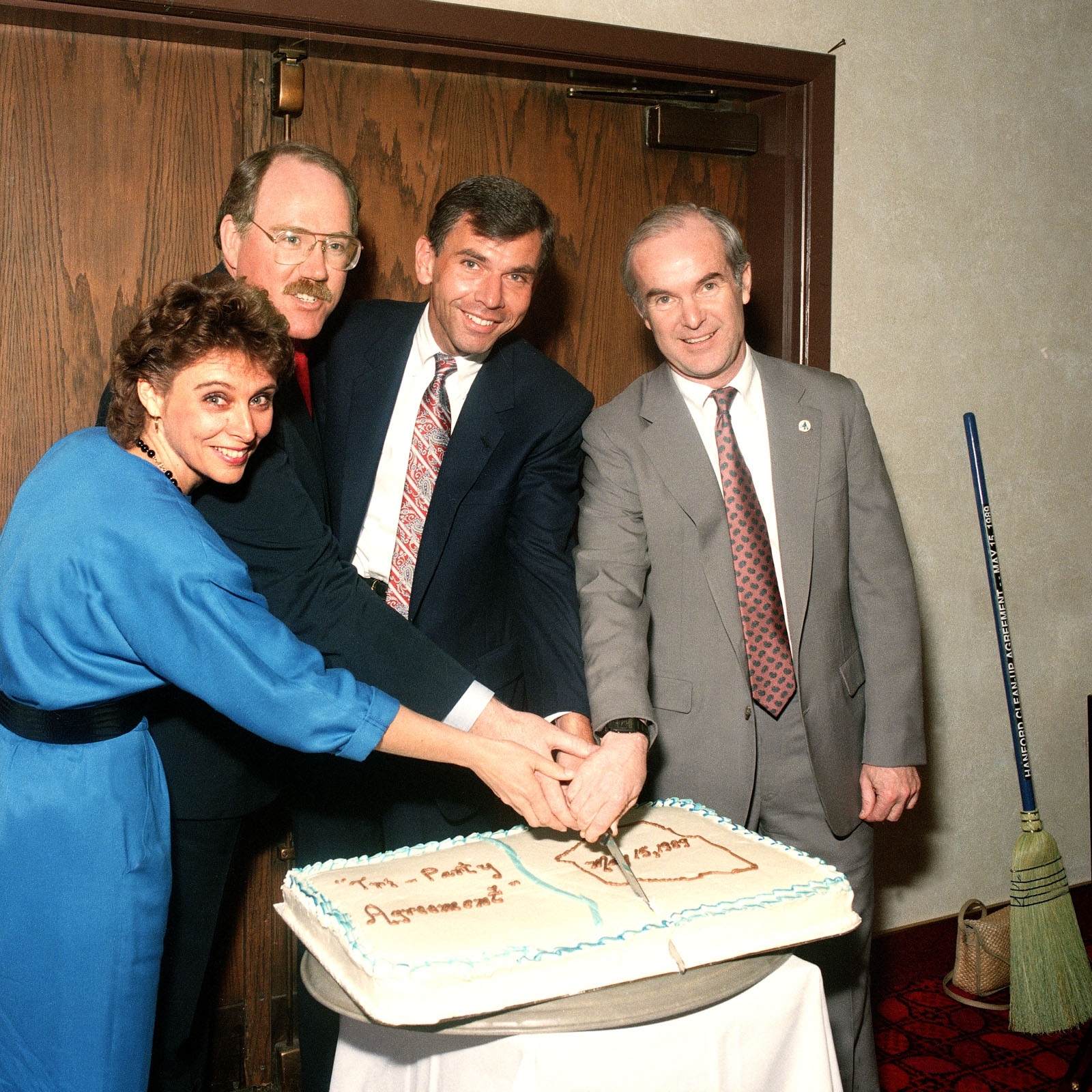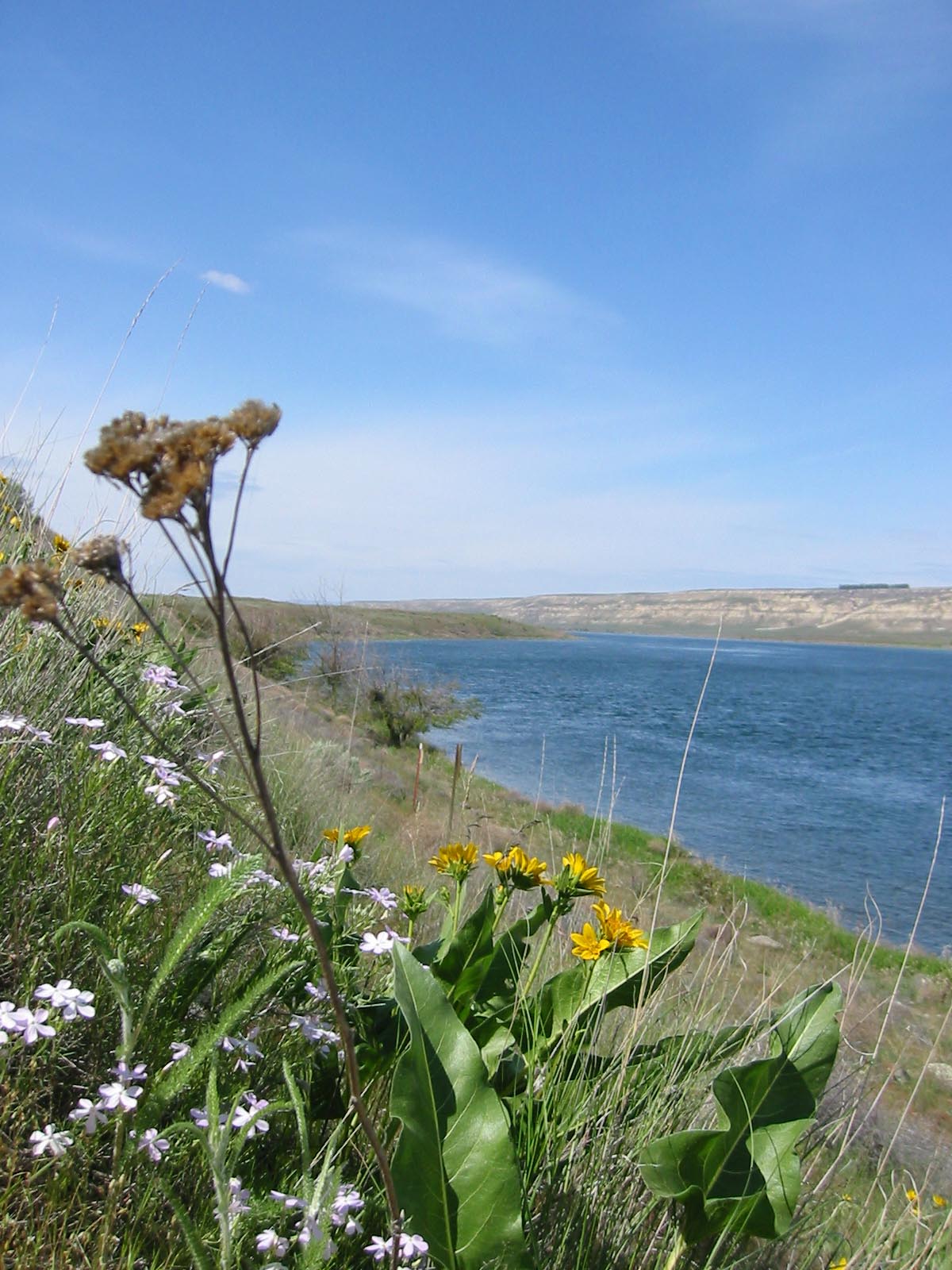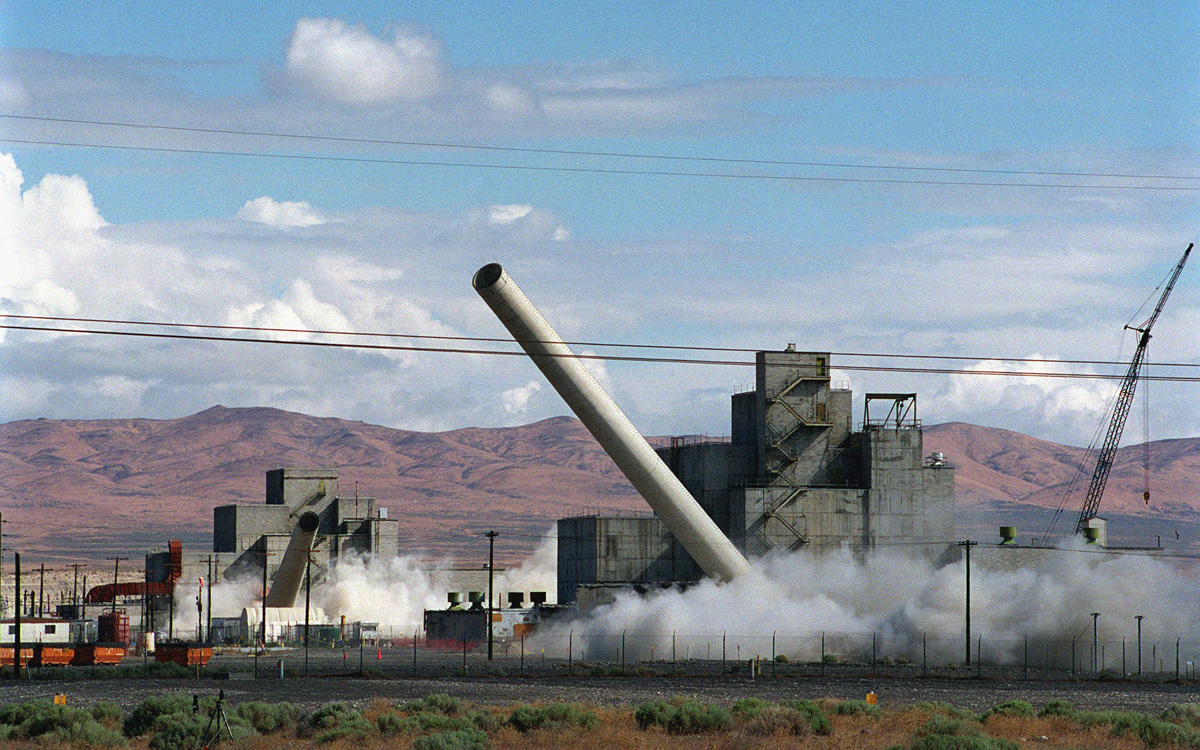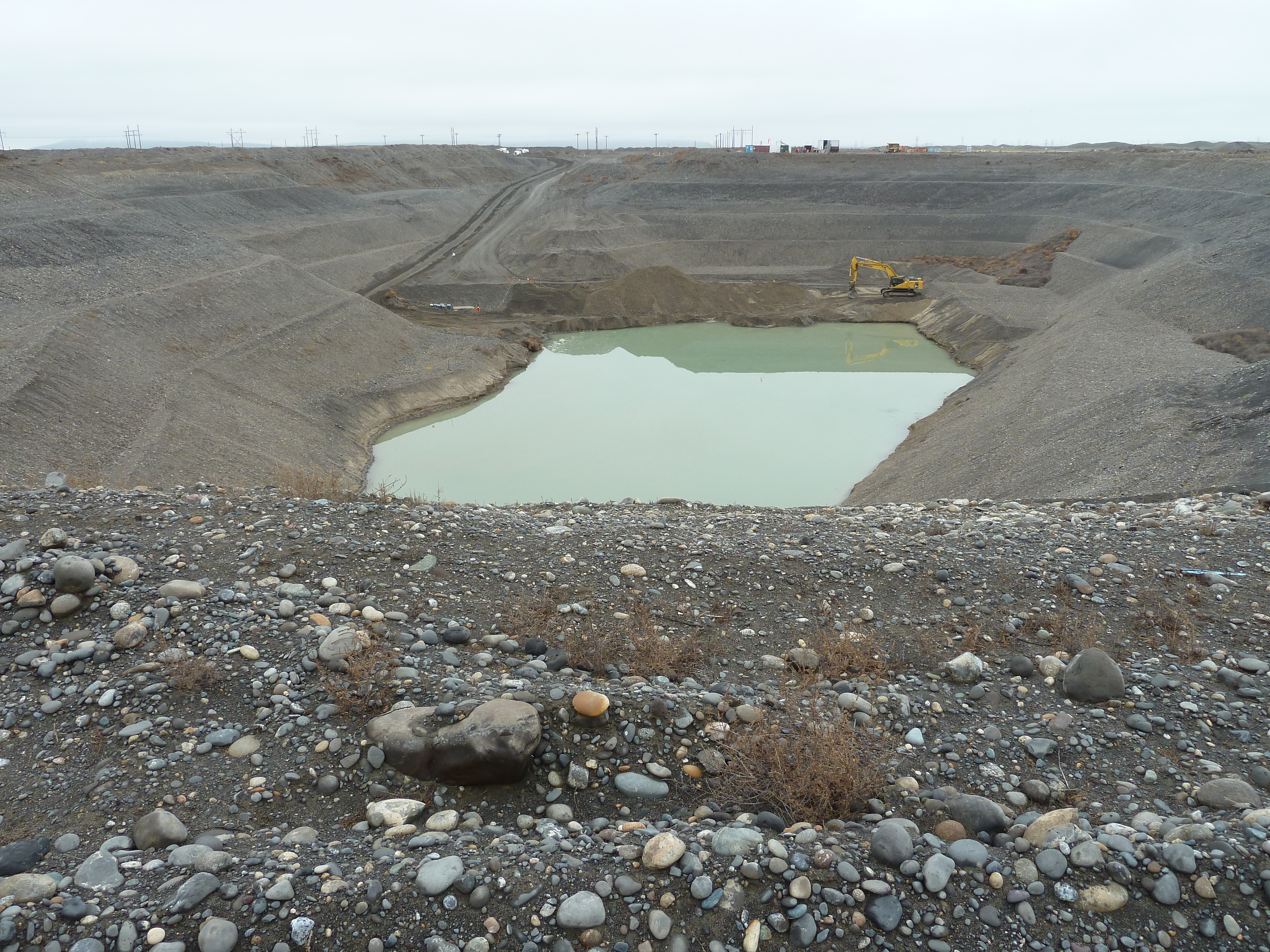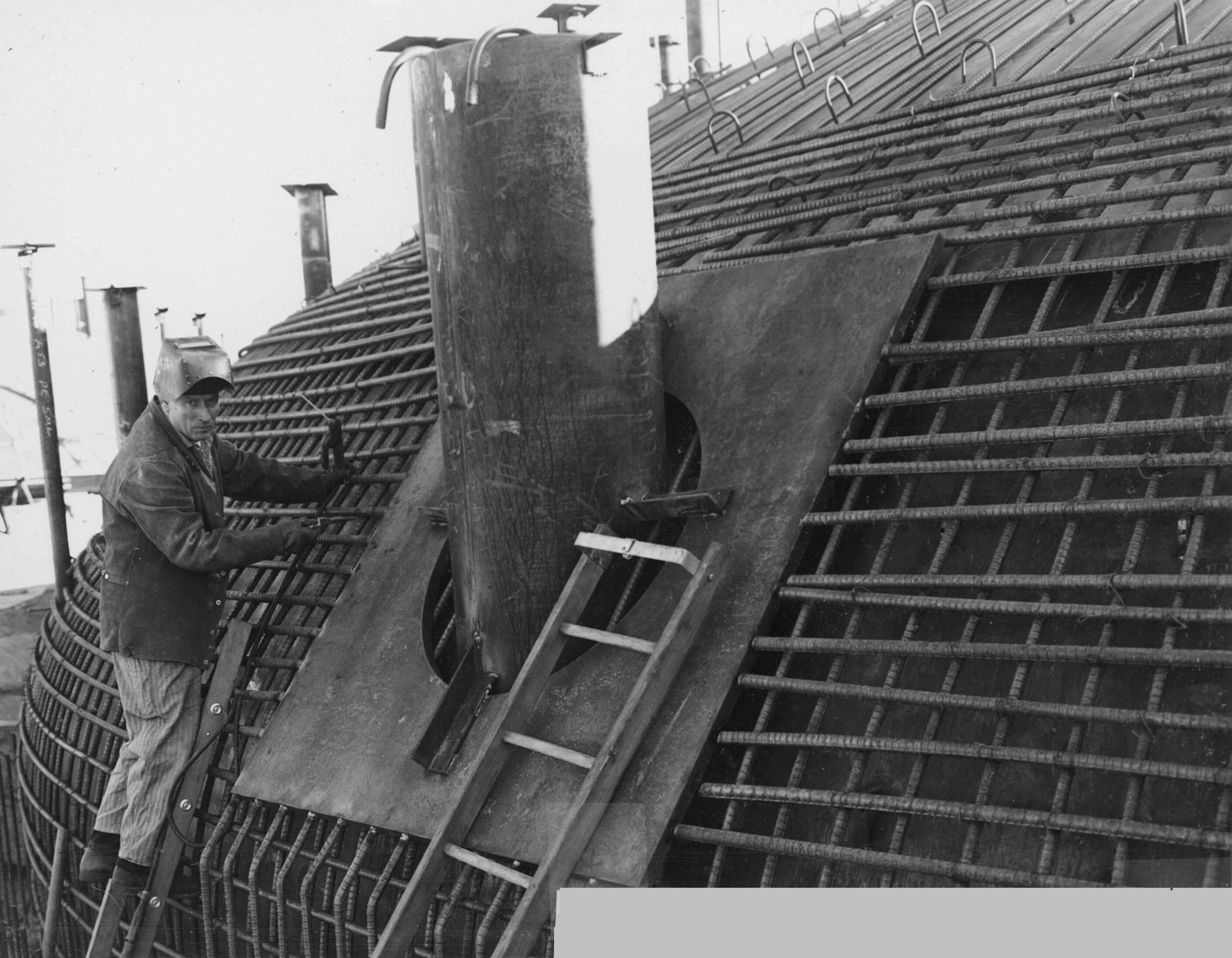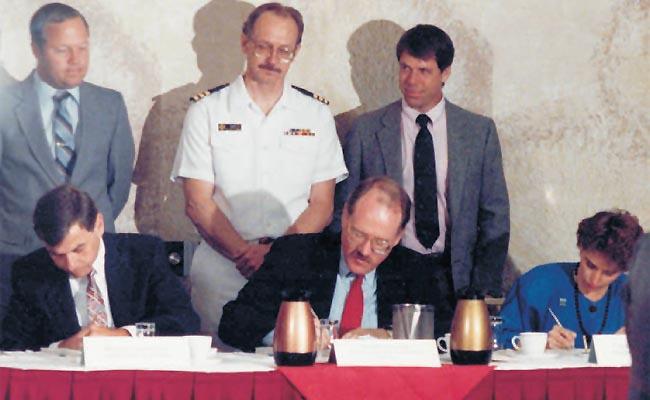
This year marks a half century of work to protect, preserve, and enhance Washington’s land, air, and water for current and future generations. May 15 also marks a special anniversary for our Nuclear Waste Program — 31 years of Hanford cleanup under the Tri-Party Agreement.
Officials from our agency, U.S. Department of Energy, and U.S. Environmental Protection Agency celebrate the Tri-Party Agreement signing in 1989.
Since the signing of the agreement in 1989 between our agency, the U.S. Department of Energy (Energy), and the U.S. Environmental Protection Agency (EPA), we work with the EPA to ensure Energy — Hanford's owner and manager — follows environmental laws and meets cleanup deadlines stipulated in that agreement.
The Hanford Site in Eastern Washington produced plutonium for the country’s nuclear weapons program during World War II and the Cold War. The site has a complex story, the conclusion of which is still undetermined.
More than 40 years of plutonium production by the federal government resulted in thousands of contaminated buildings and about 450 billion gallons of waste water discharged into the ground, contaminating large plumes of groundwater. About 56 million gallons of the most chemically hazardous and radioactive waste were stored in 177 underground storage tanks. All of the tanks have outlived their design life, and some have been confirmed to be leaking.
Complex work
It's been a challenging, yet fruitful 31 years. Much has been achieved so far during cleanup, but countless challenges and projects remain.
“Ecology has 12 different programs. Nuclear Waste Program is like all of those 12 programs, just at Hanford,” said Tri-Party Agreement Section Manager John Price. “Ecology also has four regions. We’re like a really small region, just a really small region with really intense problems.”
We work to protect the Columbia River from Hanford's contaminants.
Price has worked for Ecology’s Nuclear Waste Program for more than 19 years. Before that, he worked on radioactive waste cleanup projects in 17 different states.
One of the Hanford accomplishments he mentioned is completing an extensive study of the Columbia River about a decade ago to look for Hanford-related contamination in the Columbia River and its fish.
“I’m really proud we did that study when we did, and were able to confirm to my satisfaction that the Columbia River is in good shape,” Price said.
Moving forward, he said, some of the most important work includes treating tank waste, dealing with the highly contaminated buildings on Hanford’s central plateau, and handling Hanford’s other radioactive waste.
“That kind of boggles everybody’s minds, that there are thousands of individual problems and most of those individual problems require just massive amounts of money to deal with, but they’ve all got to be dealt with eventually,” Price said.
Here from the beginning
Demolition of the D and Dr Reactor stacks in August 1999.
Annette Carlson, permitting project manager for the program, has been with Ecology for 12 years. However, she’s been working around Hanford since before cleanup began, including work on the Tri-Party Agreement.
“I started working at the Hanford Site in 1982 when it was still a nuclear mission. So I got to see the nuclear mission then evolve to the environmental mission,” Carlson said. “I saw the early stages of Hanford cleanup and the importance of regulators, and the partnerships between Energy and EPA and Ecology develop.”
Deer standing before Hanford's cocooned D Reactor.
Carlson said the ongoing collaboration between the three agencies is the most important part for cleanup of the site, along with continued advice from the Hanford Advisory Board, tribal involvement, and communication with neighboring states.
On cleanup work, she highlighted the decommissioning of old facilities such as Hanford’s nuclear reactors and processing canyons, work done to restore parts of the site to its natural habitat, and continued progress on the Waste Treatment Plant, which will incorporate the tank waste into glass and is expected to begin treating low-activity waste in 2023.
Protecting groundwater and the river
Suzanne Dahl, the program’s Tank Waste Treatment section manager, joined Ecology in 1995 as a hydrogeologist. Before that, she worked for five years in cleanup associated with Navy sites.
A photo taken during the chromium dig near the Columbia River.
She’s proud of the work done to treat the contaminated groundwater at the site. Originally, more than 120 square miles of groundwater were contaminated above drinking water standards.
Thanks to various pump and treat facilities, a project to dig out chromium near the river, and other projects, that number is now about 60 square miles.
When Dahl first started, she said there was a belief that Hanford’s underground tanks, 67 of which had leaked, had never impacted groundwater and weren’t a threat to groundwater or the Columbia River. She said there were suspicious plumes under the tanks, but Energy officials attributed the plumes to other contaminant sources.
A worker constructs one of Hanford's underground nuclear waste storage tanks decades ago.
Dahl and a colleague pushed for a forensic look at the different contaminants in the ground to determine their sources. They were able to prove some contamination plumes came from the tanks, and that all of the single-shell tank farms have impacted groundwater.
“That led to a huge shift in how the Department of Energy looked at the more imminent danger of the tank farms, because it wasn’t just these things that were going to hold up … that no, they were already impacting groundwater,” Dahl said.
Some other accomplishments she mentioned include work to get surface water discharges turned off on Hanford’s central plateau, and efforts to have Energy stabilize for the interim the single-shell tanks by removing as much liquids as possible.
Forging onward
Moving forward, whether it be treating tank waste, demolishing contaminated structures, or other projects, Dahl said Ecology will continue to play a vital role in Hanford’s cleanup.
“As Energy looks at this solution or that solution, or in some cases distracts itself with this thing or that thing, we’re kind of the steady force that’s pushing them towards what hopefully turns out to be good, founded on principles, environmental cleanup,” Dahl said. “It’s that perseverance towards our goal I think is how we make a difference in the cleanup.”
Throughout 2020, we’re marking our agency’s 50th anniversary with stories on how Washington state’s commitment to environmental protection has developed, and the results that commitment has achieved.


